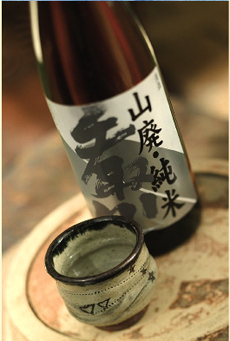TIP OF THE DAY: Try Some Cold Saké Straight Or In A Cocktail
 Saké Cider: a saké cocktail for harvest season. Photo courtesy Haru. |
Today is National Saké Day, or “Nihonshu no Hi,” as it’s known in Japan.
In Japan, October 1st is the traditional beginning of the new saké season. Brewmasters across the nation begin the process of producing their saké. Today, forget the hot saké served at restaurants. It’s bulk saké, and often has an alcoholic burn of a lower-quality product. Instead, try saké flights or saké-infused cocktails made with a higher quality product. Chilled, premium saké is as appealing as white wine, and pairs easily with non-Asian cuisine. We’re doing flights, trying some different saké brands. We have a supply of traditional saké cups (masu), although any wine glass or shot glass will do. The traditional toast: “Kanpai!” (pronounced con-PIE). Consider this harvest-themed Mr. Beam’s Saké Cider, created with Jim Beam Black, Reiko Cold Saké, and fresh apple cider. It was a seasonal special last autumn and winter at Haru Saké Bar and the Haru restaurants in New York City and Boston. We liked it so much, we’re reviving it on THE NIBBLE (although you’ll have to choose something else on the menu at Haru). |
|
|
SAKÉ CIDER COCKTAIL Ingredients For One Drink 1. COMBINE ingredients in a cocktail shaker with ice. Shake vigorously. 2. STRAIN into a rocks glass or Martini glass. |
 Quality cold sake. The cup is called a masu. Photo courtesy Tedorigawa Brewing Company. |
|
|
|
||


